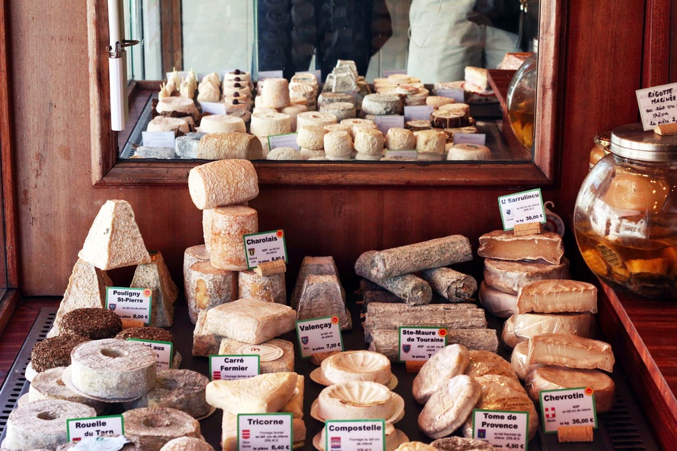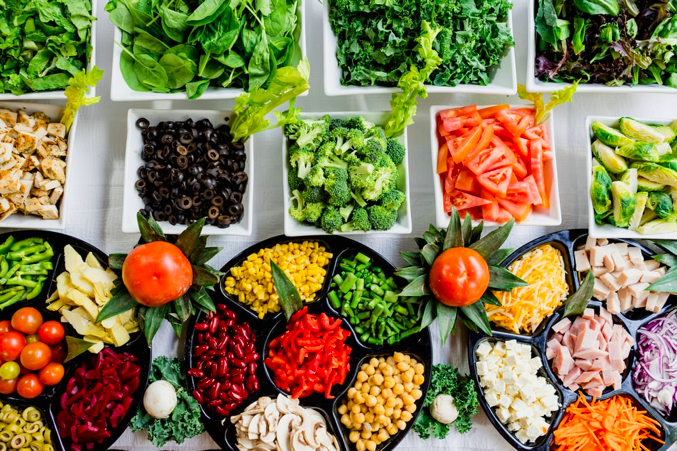Building steps to eating more food variety.
You may find it helps to keep the problem manageable to consider what exactly you want to outcome to be. Try to make your aims as specific as you can, it can feel overwhelming to be too vague and broad, for instance “to eat normally” or “to eat what everyone else has”. When you have your aims, choose one to start. Begin by making a list of all the foods you can eat now, and highlight the ones that help to meet your aim. You might find these stories helpful.
All of these people started by setting a clear goal, and thinking about the experiments they could try, and how to overcome the barriers they might meet.
Minna’s story
Minna felt safe with only very small range of foods. She took her own meal to college, and had the same lunch at home each day, a cheese sandwich made with white bread and a particular brand of grated cheese. It was troublesome to be reliant on this particular brand, as it meant she had to get to a particular supermarket regularly to stock up, and they didn’t always have it. This exasperated her family, who struggled to understand why another brand might not be acceptable. Minna wanted to be able to buy and eat a cheese sandwich at college, as that would be much more convenient for her, and make it easier to eat with fellow students. She set herself a first goal to buy a cheese sandwich at college, and eat at least half of it, in a quiet place.

Minna tried to think about why it seemed so difficult. She remembered her early experience of eating cheese. She thought that her mother had sometimes bought ready-grated cheese, and sometimes grated cheese herself, using a much stronger-flavoured cheese, and this was sometimes unexpected. Minna stuck to the branded product to prevent these unmanageable surprises. She experimented with buying blocks of cheese labelled “mild”. She used some relaxation techniques before handling the cheese and getting used to how it felt, and smelled. When she was ready, she tried a tiny taste, without swallowing it. She gradually felt more at ease with it, and decided to try a cheese sandwich at college. The first time, she bought one and took it home, to try tiny bites of the cheese filling. She found the cheese did have quite a mild flavour, and bought a few more to eat at home. She felt braver about trying a cheese sandwich at college, and looked around for a place where she could feel calm. She found an alcove with a few seats outside the library. She bought her sandwich, but took along her safe sandwich from home in case she needed it. She met her goal of eating half of it, in her quiet place. She gradually was able to eat cheese sandwiches she bought at college and in other places, without having her own sandwich as a back-up. This experience helped her to gain confidence to try other foods.
Lee’s story
Lee did voluntary work on 2 days a week, he was there all day. He wanted to be able to go to the café with some of the other people there, but was nervous that he would not be able to eat the food. He set a first goal, to go to the local café and identify some foods he could eat.

Lee started by visiting the café alone, at a quiet time. He looked at the range of food on display, to find items he could eat, or might try. He knew he could drink a cup of coffee, so he bought one, and stayed in the café for a while, to get used to the surroundings. He made a list, checking some items again to make sure of the ingredients. He was pleased to find he could buy slices of white or brown bread, packs of cream crackers, and wrapped portions of butter and cheese. He saw a few other items he could try.
| Items I can eat now at home, that are available in the café | Items available in the café I might try there | Not ready to try yet |
Plain white bread with butter Cream crackers with butter | Plain white bread with wrapped butter portion Packet of cream crackers with wrapped butter portion | Granary bread, bread with seeds |
Mild cheddar cheese Cheese spread | Wrapped cheese portions | |
| Cheese sandwich with mild cheese and plain white bread | Plain cheese sandwich | |
| Ham sandwich with wafer thin ham | Plain ham sandwich if the ham looks thin-sliced (it did) | Sandwich with salad in it |
| Yogurt with no bits | Greek yogurt with honey | Yogurt with pieces of fruit |
| Fruit juice without bits | Fruit juice in cartons | |
| Bananas | Bananas | |
| Crisps | Crisps, mini cheddar biscuits |
He was able to put together a meal he could eat, of cheese or ham sandwich, or crackers with butter and cheese, with yogurt and a banana or fruit juice, and crisps. He had that a few times on his own, and then felt he could go to the café with another volunteer, and eat together with him. They enjoyed the time together.
Dera’s Story
Dera wanted to be able to eat more fruit and vegetables, for her general health, and especially to improve troublesome constipation. She set a goal of finding 5 different fruits and vegetables she could eat regularly. She began by thinking about foods in the fruit and vegetables group that she was comfortable to eat. She could see that the main difficulty for her was texture. She asked other people for suggestions.

| Comfortable now | Can eat now if I have to | Might try | Not ready to try yet |
| Orange juice with no bits | Pineapple juice with no bits | Fresh oranges | |
| Apple juice with no bits | Cooked or tinned apple without skin, with custard or ice cream | Plain cooked apple Fresh apple without skin | Whole apples Pears (gritty texture) |
| Sieved strawberries and raspberries, on ice cream | Sieved peaches or apricots | ||
| Tomatoes without skin or pips | Tomato juice Tinned tomatoes, which might have a few pips or pieces of skin. | Whole fresh tomato | |
| Cucumber without skin or pips | Cucumber slices with seeds, but no skin | Cucumber skin | |
| Carrots mashed into mashed potato | Plain mashed carrots | Mashed sweet potato | |
| Other mashed root vegetables like parsnip, turnips, swede, celery root | Beetroot | ||
| Smooth tomato soup | Other smooth vegetable soups |
Once she could see that her main challenge was texture, the blender and the sieve became her friends. She experimented with the support of her mother, at a planned time when they would not be rushed, and could stay calm. They agreed she would not have to taste the foods until she felt ready.
She poured pineapple juice through a sieve, to be sure it did not have bits. There was some pulp left in the sieve, but Dera stirred it with her finger, and found it was very smooth. She tried tiny sips of juice, and found she like the sweet flavour, so built up to larger amounts. She did not think she could manage the fibrous texture of tinned pineapple.
She found she could try quite a few vegetables if she cooked them, and made them into a purée in the blender. At first, she added water or milk, and pushed it through a sieve to check there were no lumps, and gradually worked on a less liquid, more mashed texture.
She was able to get into a routine of getting 5 servings of fruit and vegetables every day, using smooth vegetable soups (including spinach soup), tomato and cucumber in sandwiches or salad, and smoothly mashed vegetables.
Michaela’s story
Michaela regularly went to the cinema with two friends. They liked to have takeaway pizza afterwards, but Michaela didn’t like pizza, so she usually just went straight home after the film, or didn’t eat anything. They had tried to persuade her to try, by reminding her that she could eat bread, tomatoes and cheese, but not a cheese and tomato pizza, but that just made her feel upset, as she couldn’t explain the problem.
She began by looking at frozen pizza in the supermarket. She found some multi-packs of small cheese and tomato pizza aimed at children, and bought a pack to experiment with.
She cooked a pizza and spent a bit of time trying out the smell, and the feel in her fingers. She cut it into small pieces, and tried some small pieces of crust, which she chewed, but spat out.
A few days later, when she had some quiet time, she tried again. She scraped off the topping, and tried the softer part of the pizza base, which she was able to chew and swallow.
Over a few weeks – and more packs of pizza – she tried the tomato sauce, and some pieces of cheese from the topping. Sometimes she did not swallow it, but spat it out. She found it much easier than she expected to eat the separate parts of the pizza, and that made her feel she could make progress towards her aim.
Eventually, she was able to eat a whole slice of the small pizza, without separating out the different components, and felt really pleased. She then tried a whole small pizza as her evening meal, and managed almost all of it.
She then ordered a small margherita pizza from the takeaway her friends used. She put half in the fridge, and cut the rest into small pieces. She managed to eat a few of them, and after a break to calm down, had a few more. The next day, she heated a normal-size slice from the second half, and ate almost all of it.
Eventually, she joined her friends in having pizza. She ordered a cheese and tomato pizza, and ate a couple of slices. Her friends were pleased, and encouraging, and she enjoyed the evening.
You might find these interesting too!
A neurodiversity-informed guide for carers supporting someone with an eating disorder, with a focus on autism and ADHD. This resource offers practical, compassionate strategies grounded in lived experience and clinical expertise.
This animation was created by people with lived experience of eating disorder recovery, as told in their own words.
Autism and ADHD can shape eating disorder behaviours in distinct ways. In this blog post by Lauren Makin, lived experiences of Neurodivergent adults with binge- and purge-type eating disorders highlight how sensory sensitivities, emotional regulation, routines, impulsivity, and social exclusion influence eating difficulties, and why more tailored, Neurodivergent-informed support is needed.